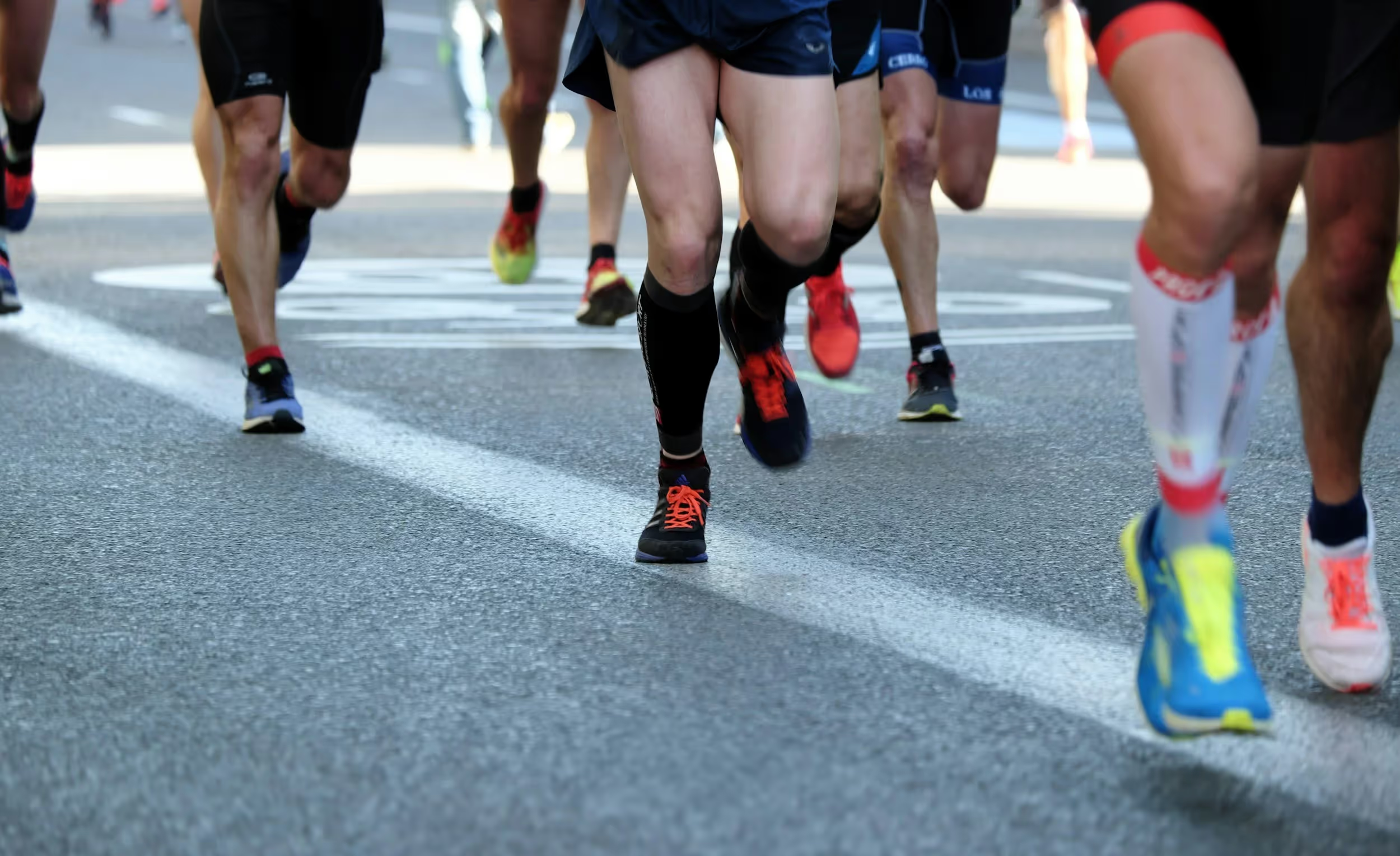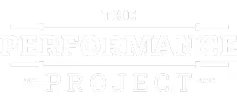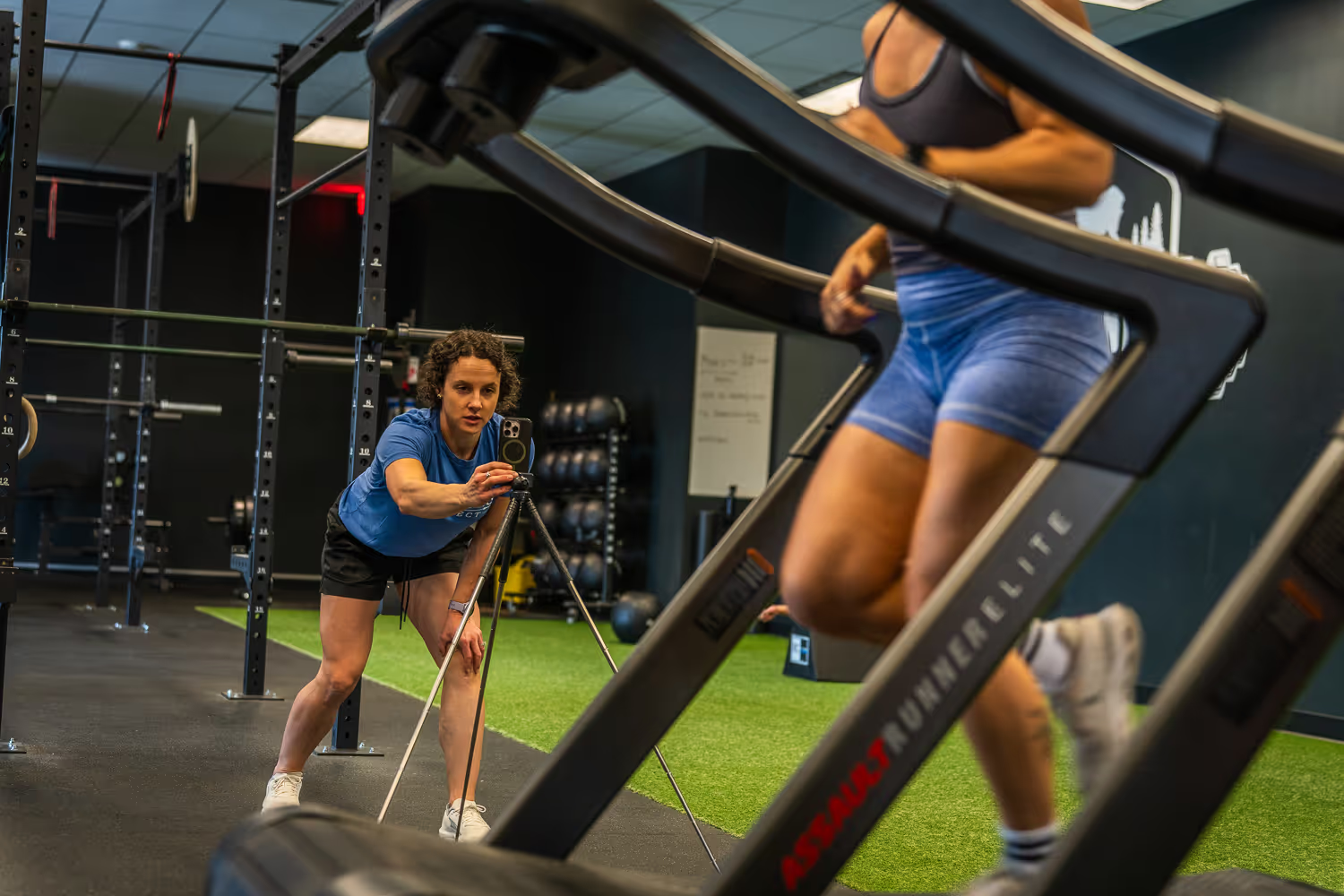gait analysis might be exactly what you need. Rather than guessing what’s wrong—or trying out endless new shoes and stretches—a running gait analysis offers a clear, professional look at how your body moves. It’s a powerful tool for identifying inefficiencies that affect speed, endurance, and injury risk.
READ: The Ultimate Guide to Running Gait Analysis: What It Is, How It Works, and Why It Matters
This isn’t just about elite runners, either. Recreational runners, beginners, and even those coming back from time off can all benefit from a deeper understanding of their gait mechanics. By analyzing your movement in real time, clinicians can pinpoint the small patterns that make a big difference—helping you run more efficiently, with less strain and greater confidence.

gait analysis session at Performance Project PT starts with a detailed conversation. Your clinician will ask about your running history, current training volume, past injuries, and any specific discomfort or goals you’re experiencing. This context shapes the evaluation and ensures the analysis is personalized—not just a standard checklist.
Next comes a physical assessment. This often includes a range of motion tests, strength evaluations, and movement screenings to get a baseline of how your joints and muscles are functioning. The goal is to uncover any limitations or asymmetries that could be influencing your gait. It’s a vital part of the process that helps connect what you feel during a run with what your body is actually doing.
READ: How Dry Needling at The Performance Project Supports Active Lifestyles in South Denver
Only after this groundwork is laid do you step onto the treadmill. And by that point, your clinician already has valuable clues about where to look and what to test in motion.
Key Things Your Clinician Looks for During the Assessment
Once you're on the treadmill and running at a comfortable pace, your clinician closely observes how your body moves from head to toe. They’ll typically record your run from multiple angles—front, back, and side—to analyze frame-by-frame how each part of your stride is contributing to (or detracting from) efficient movement.
Key factors under review include:
- Foot strike pattern: Are you landing on your heel, midfoot, or forefoot—and is it helping or hindering your performance?
- Knee alignment: Does the knee track in line with your foot, or does it collapse inward, increasing injury risk?
- Hip control: Is your pelvis stable, or does it drop with each step, potentially straining the lower back or IT band?
- Cadence and stride length: Are you overstriding or running with a pace that invites impact-related stress?
Every runner moves differently, and these details help create a complete picture of how you run—not just what your form looks like, but how it functions under stress.
READ: How Often Should You Get Dry Needling? A South Denver PT’s Recommendation
What You’ll Learn From Your Gait Analysis
One of the biggest benefits of a running gait analysis is clarity. You’ll walk away with a deeper understanding of how your body moves—and why that matters. Your clinician will review the video footage with you, pointing out key moments in your stride that reveal inefficiencies, compensations, or risk factors for injury.
You’ll also get insight into the root causes of any discomfort you’ve been experiencing. Maybe that persistent shin pain stems from overstriding, or your hip tightness comes from a lack of core stability. Instead of treating symptoms, a gait analysis uncovers the underlying mechanics so you can address the real issue.
Most importantly, the session ends with actionable next steps. These may include specific mobility drills, strength exercises, form adjustments, or footwear recommendations. The goal isn’t to change your running style overnight—it’s to build a smarter foundation for long-term improvement.
How Performance Project PT Turns Insight Into Action
At Performance Project PT in Centennial, a running gait analysis is just the beginning. Once your movement patterns are assessed, the team creates a personalized plan designed to correct inefficiencies, improve performance, and reduce your risk of injury. Whether you’re training for your next race or simply want to run pain-free, every recommendation is tailored to your specific needs and goals.
From targeted strength and mobility exercises to hands-on therapy and real-time form coaching, the clinic offers a full range of services to help you implement the findings from your gait analysis. You’ll never be left wondering what to do next—the plan is clear, actionable, and grounded in your unique biomechanics.
With expert guidance and ongoing support, you’ll move forward not just with more information—but with the tools to actually run better, smarter, and stronger.

